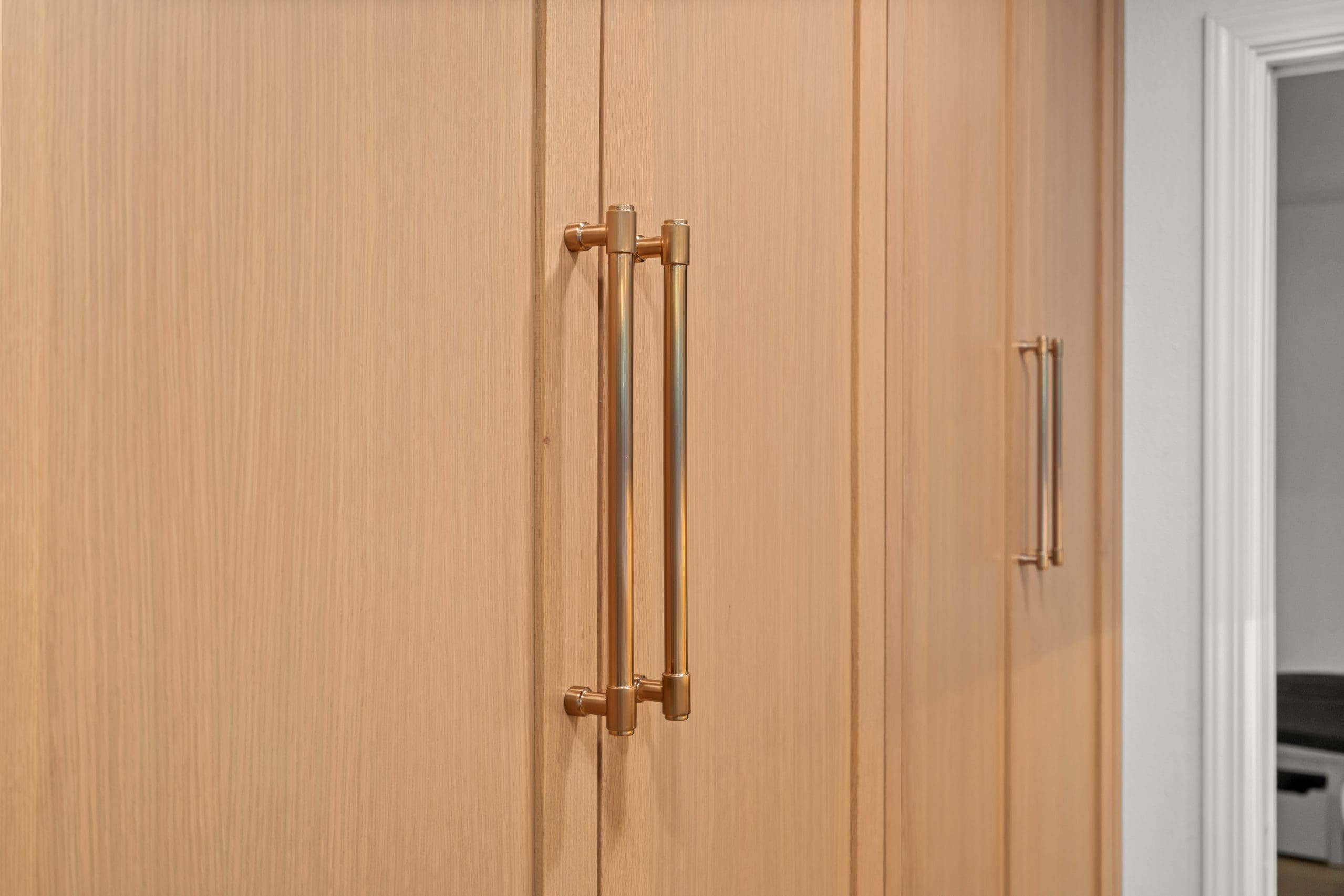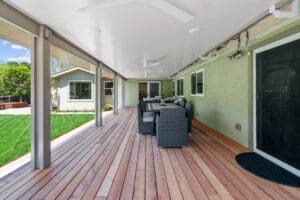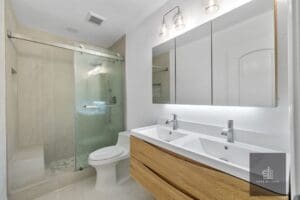Let’s Talk About Breathing New Life Into Your Home
Ever notice how a stuffy room just drains your energy? You crack a window and—whoosh—suddenly everything feels fresher, brighter, and more alive. Now, imagine your entire house feeling like that all the time. That’s the magic of maximizing natural ventilation, and it’s a game-changer for any Bay Area home remodel.
We’re not just talking about a breeze here and there. We’re talking about designing a home that breathes with the seasons, slashes your energy bills, and fills your space with that incredible Northern California air. As your local home renovation contractor, we at EA Home Builders see this as a cornerstone of intelligent, comfortable design. It’s about working with our environment, not against it. So, let’s get into how we can make your home the coolest on the block (in both senses of the word).
The “Why”: More Than Just a Nice Breeze
We get it. When you think about a whole house remodeling project, you’re probably dreaming about that new kitchen remodeling layout or a spa-like bathroom remodeling suite. But what’s the point of a beautiful space if it doesn’t feel good to be in? Natural ventilation is the secret sauce that elevates good design to great design.
Here’s the real deal on why we’re such big fans:
- It Saves You Real Money: Relying less on your AC means lower electricity bills. In our mild Bay Area climate, a well-ventilated home can keep you comfortable for a huge chunk of the year without ever touching the thermostat.
- It’s Healthier: Stale air traps allergens, pollutants, and moisture that can lead to mold. Flushing your home with fresh air is like giving your lungs a vacation. IMO, it’s one of the easiest and most effective wellness upgrades you can make.
- It Feels Amazing: There’s a tangible, almost primal comfort you get from fresh air and natural cooling that a humming HVAC unit can never replicate. It connects your indoor life to the gorgeous outdoors we’re lucky to have right here in Contra Costa County.
The Science of Airflow (Don’t Worry, It’s Painless)
Okay, let’s get a little technical, but we promise to keep it simple. Natural ventilation works on two basic principles: wind and buoyancy (that’s the fancy term for hot air rising).
Think of your house like a sailboat. You need to catch the wind to move. Strategically placed windows and vents act as your sails, capturing the prevailing breezes. For us in the Bay Area, that often means cool air coming from the west.
The second principle is the stack effect. Hot air naturally rises and escapes through high points, like a second-story window or a skylight. This creates a vacuum that pulls in cooler, denser air from lower down. It’s a continuous, silent, and free cooling system.
Getting this right is where an expert home improvement team like ours comes in. We don’t just throw windows into a wall. We think about the flow.
Your Game Plan: Strategic Openings for Maximum Flow
This is where your custom remodel comes to life. It’s not about adding more windows; it’s about adding the right windows in the right places.
Windows: The Lungs of Your Home
Windows are your primary tool. The goal is to create a cross-breeze that sweeps through your living spaces.
- Operable Windows are Non-Negotiable: This might seem obvious, but we’ve seen it too many times: beautiful, giant picture windows that don’t open. What’s the point? For ventilation, you need windows you can actually operate. Casement and awning windows are our top picks because they catch and direct wind from the sides, acting like little air scoops.
- Go High and Low: Place operable windows low on the windward side (where the wind comes from) and high on the leeward side (where the wind goes). This encourages that lovely stack effect we talked about, pulling cool air in low and letting hot air escape high. This is a classic move we use in luxury home renovations to create that effortless, elevated comfort.
Doors That Do Double Duty
Doors aren’t just for entering and exiting. A well-placed door can be the key to a whole-home ventilation strategy.
- French Doors or Sliders: Replacing a solid wall with a set of French doors or a large sliding glass door to your backyard or patio is a total game-changer. It creates a massive opening for air to flow through, effectively turning an entire wall into a vent.
- Transoms are Your Secret Weapon: Remember those old-fashioned windows above doors? They’re genius. A transom window above an interior door allows hot air to rise and move out of a room, even when the door is closed. It’s a small detail with a huge impact, perfect for making a home addition feel connected to the original house’s airflow.
The Power of the Chimney Effect: Vents and Skylights
Sometimes, windows and doors aren’t enough, especially in the middle of your home or in spaces like a basement remodel.
- Skylights That Open: A ventilating skylight is like a chimney for your hot air. As heat builds up during the day, you can open the skylight and watch as it literally gets sucked out of the room. It’s borderline magical.
- Whole-House Fans: For those hotter, still days, a whole-house fan is a brilliant mechanical assist. It’s installed in your attic and works by rapidly pulling cool air in through your windows and exhausting hot air out through the attic vents. It uses a fraction of the energy of air conditioning and can cool your home down in minutes. When you’re looking for a general contractor for your project, make sure they have experience properly sizing and installing these—it makes all the difference.
Navigating Our Quirky Bay Area Microclimates
Let’s be real. The “Bay Area” isn’t one climate. The cooling fog in Oakland is different from the dry heat in Walnut Creek or Danville. A ventilation strategy that works in one might not be ideal for another.
This is where local expertise is everything. We design for your specific location. A home in a wind-protected part of Walnut Creek might need a stronger focus on the stack effect, while a house on a hill in Oakland can harness those consistent ocean breezes. When you search for “home remodeling near me,” you’re not just looking for the nearest contractor; you’re looking for the one who understands the air you breathe.
A Quick Guide to Window Choices
Here’s a handy table to break down your options. This is the kind of detail we go over with our clients to ensure their custom remodels are both beautiful and brilliantly functional.
| Window Type | Ventilation Efficiency | Best Use Case | Our Take |
|---|---|---|---|
| Double-Hung | Good | Traditional looks; easy to clean. | A classic, reliable choice, but not the most efficient at catching breezes. |
| Casement | Excellent | Directing breezes; modern aesthetics. | Our go-to for maximum airflow. They crank out and act like a sail. |
| Awning | Great | Wet climates; maintaining privacy. | Perfect for letting air in while keeping rain out, even when left open a crack. |
| Sliding | Fair | Space-saving; modern layouts. | They get the job done but don’t direct air as well as crank-out options. |
| Picture | None | Unobstructed views. | Beautiful, but pair them with operable windows nearby! |
When to Call in the Pros (That’s Us!)
You can certainly open a few windows yourself. But truly integrating ventilation into your home remodeling plans? That requires a thoughtful design from the ground up.
This is exactly the kind of challenge we love at EA Home Builders. Whether it’s a bathroom renovation contractor planning for steam and moisture control or a basement contractor figuring out how to make a below-ground space feel airy and bright, we bake these principles into our designs from day one.
We don’t just look at a floor plan; we look at a flow plan. We consider sun paths, prevailing winds, and the specific layout of your property. This integrated approach is what separates a basic remodeling company from a true partner in creating your dream home. Don’t just take our word for it; check out our reviews to see how we’ve tackled similar challenges for your nearest neighbors.
We know talking to a contractor can be daunting, especially when you’re worried about the final price. But getting the design right from the start is how we control the overall cost and prevent expensive fixes later. A well-ventilated home is a more efficient and durable home, which saves you money for years to come. FYI 🙂
Your Top Ventilation Questions, Answered
1. Can I really add good ventilation to an existing home, or is this only for new builds?
Absolutely, you can! This is a huge part of our work at EA Home Builders. During a whole house remodeling project, we have the perfect opportunity to reassess your home’s airflow. We can add transoms, replace fixed windows with operable ones, install a whole-house fan, or even add a strategically placed skylight. Even a kitchen remodeling project is a chance to reposition a window over the sink to catch the afternoon breeze.
2. What about security? I’m nervous about leaving windows open at night.
This is a very common and valid concern. We have a bunch of solutions! We can install casement windows with locking pins that only allow them to open a few inches, or use awning windows that are high up and difficult to access from the outside. There are also a multitude of stylish and robust aftermarket locks and guards designed specifically for this purpose.
3. Does this work when it’s really hot, like during a heatwave?
Natural ventilation has its limits, we’ll be honest. During an extreme heatwave, it might not be enough on its own. However, a well-ventilated home will take much longer to heat up and will cool down far more quickly once the evening comes. When paired with a whole-house fan or even a small, efficient AC unit for backup, you’ll be in great shape. The goal is to drastically reduce your reliance on mechanical cooling, not necessarily eliminate it 100% of the time.
Ready to Let the Fresh Air In?
Maximizing natural ventilation isn’t a trendy upgrade; it’s a core principle of good, sustainable, and healthy home design. It’s about creating a space that feels as good as it looks, all while being kinder to your wallet and the planet.
So, what do you say? Ready to stop fighting the stale air and start designing a home that breathes? Let’s have a conversation. As your closest local experts in Contra Costa County, from Danville to Oakland, we’re here to help you build not just a house, but a sanctuary. Give EA Home Builders a call, and let’s make it happen.






